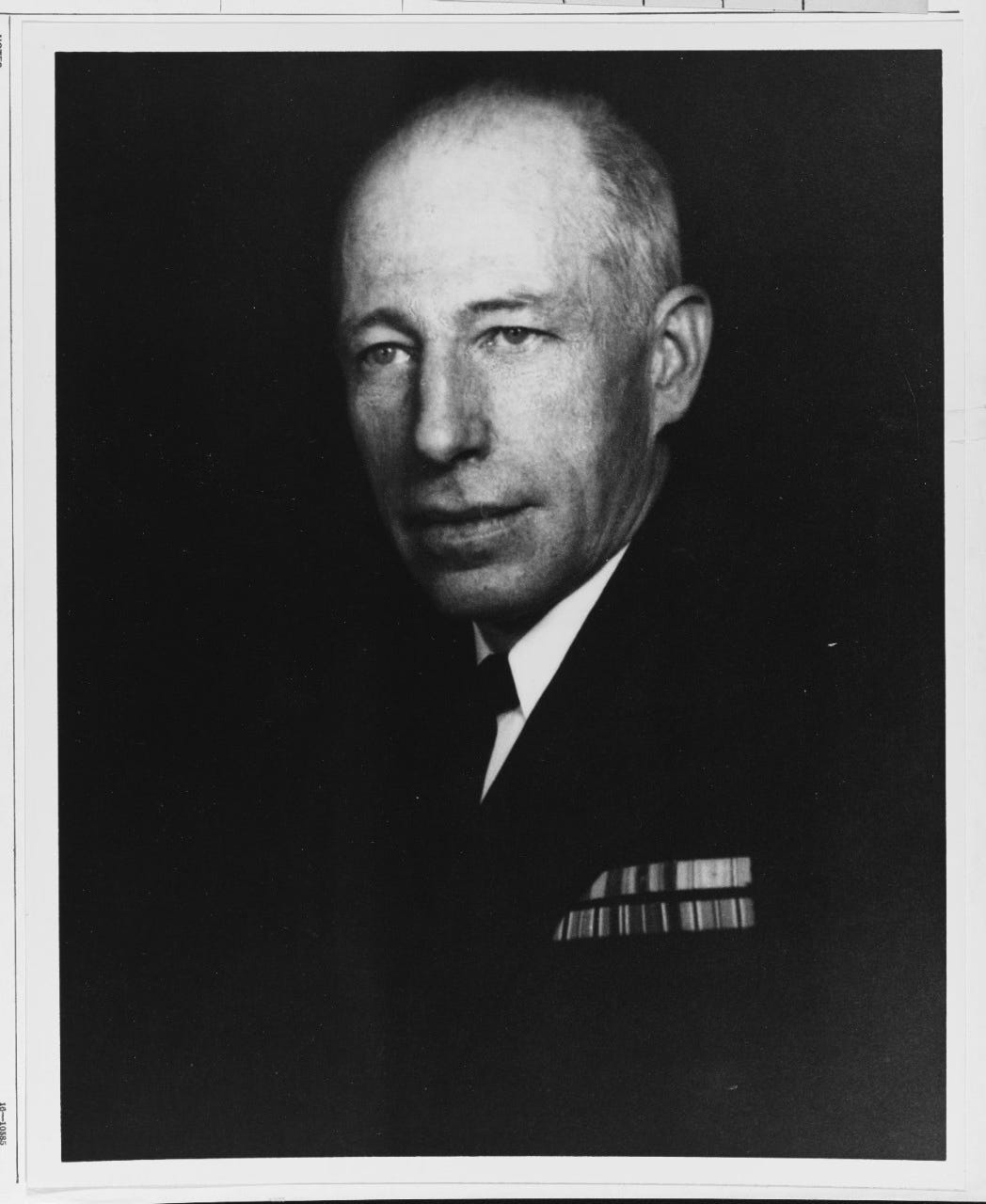"Deplorable dependence"—and an industrial base to fix it
A prescient 1920 analysis by a US Naval officer holds lessons for today's efforts to fortify the US defense industrial base
Welcome to a/symmetric, published by Force Distance Times.
Each week, we bring you news and analysis on the global industrial contest, where production is power and competition is (often) asymmetric.
This week:
A look at the first-ever US National Defense Industrial Strategy, and drawing lessons from World War I
Weekly Links Round-Up: COMAC comes to Europe, why there isn’t a European CATL, and chipmaker HII warns against delaying aircraft carrier orders.
"Deplorable dependence"—and an industrial base to fix it
A century ago, reflecting on World War I, US Navy lieutenant commander Carleton H. Wright wrote of the critical role of American explosives production in the Allied victory.
By 1916, Britain and its allies desperately needed more ammunition. They turned to the US for more supplies. America quickly set up new plants and expanding existing ones to churn out raw materials and manufactured explosives. Wright notes:
“Thus American production of military explosives rapidly increased and the way was being prepared so that, upon our entrance into the war, the upward trend of production was merely greatly accelerated to meet the requirements of our own military and naval forces, while still continuing to furnish vast supplies to the Allies.”
Yet Wright also identified worrying vulnerabilities in the US defense industrial base. Chief among them was the “deplorable dependence” on imports of upstream inputs, and the outsize costs this could impose in the event of war:
“Our entire production of explosives is, however, dependent upon imports of nitrate from Chili, and hence may be greatly reduced or even brought to a halt by the operations of an active naval force, even though the latter be inferior in strength to our main fleet.”

“A robust, resilient, and dynamic defense industrial ecosystem”
More than a hundred years on, Wright’s prescient analysis provides a useful historical parallel to current discussions around strengthening the US defense industrial base.
The US Department of Defense this week published its much anticipated National Defense Industrial Strategy (NDIS), laying out a vision for modernizing the nation’s military industrial base.
At the heart of the 60-page document (pdf) is the question: “How do we prioritize and optimize defense needs in a competitive landscape undergirded by geopolitical, economic, and technological tensions?”
Prioritizing the upstream
Key to setting the right priorities is accurately and comprehensively assessing threats.
On that, the NDIS is explicit: its second sentence name checks China and Russia as America’s chief geopolitical rivals posing the most acute and coercive threats.
Less directly addressed is how China has grown to be, as the NDIS acknowledges, “the global industrial powerhouse in many key areas – from shipbuilding to critical minerals to microelectronics.” Yet, arguably any attempt to counter risks must grapple with an opponent’s strategy from which those very threats stem.
That strategy is a simple one: targeting upstream nodes to create asymmetric dependencies—the very dynamic that Wright identified a century prior.
To be sure, the NDIS does make references to securing raw materials and critical inputs. But it is less explicit on the need to prioritize the upstream when building resilient supply chains.
A precautionary case study: energetics
The US supply chain for energetics—chemicals used to make things go kaboom—illustrates the risks of not sufficiently prioritizing upstream nodes. As is well documented, the US has insufficient production of energetics, and imports a third of its energetics materials—much of it from China.
That foreign dependence is not just a result of inadequate domestic production. It’s also due to a lack of foresight resulting in the sale of critical raw material assets to China, in turn embedding Beijing more deeply into global supply chains.
Consider cesium nitrate, a low explosive material used in military pyrotechnics.
Thanks to a deliberate PRC strategy that targets the upstream—and a US approach that has thus far played into it—all three of the world’s main cesium-producing mines are now controlled by China’s Sinomine Resource.1
Namely, these are: the Tanco mine in Canada, which Sinomine bought from US-based Cabot Corp. in 2019; the Sinclair mine in Australia, which sold all of its cesium to the part of Cabot acquired by Sinomine; and the Bikita mine in Zimbabwe, which Sinomine purchased in 2022.
Leveraging peacetime production capacity
Back in 1920, Wright recognized that to address America’s import dependence on raw materials needed to make explosives, setting up nitrogen fixing plants nationwide was only part of the solution. Urgently needed, too, was for the government to support the “struggling dye industry:”
“…both because of the ready adaptation of dye processes and plants to the rapid production of explosives in the event of war, and because the dye industry in time of peace encourages increased production of the materials required in the manufacture of explosives in time of war.”
In other words: grow production capacity that can 1) be converted to make military products when necessary; and 2) stimulate a robust production base of relevant upstream inputs.

One of China’s largest industrial explosives makers provides an illustrative example of Wright’s logic.
Guangdong Hongda got its start making explosives for the mining and construction industries, and has since become a significant player in the defense industrial sector making ammunitions and supersonic missiles. Last year, it acquired Jiangsu Hongguang Chemical, which makes the explosive compound RDX.
In an investor call last month (link in Chinese), Guangdong Hongda gushed about the acquisition. It will not only “enhance the company's military brand image,” but because RDX is also an upstream input for detonators, provide “important strategic value for the company's civil explosives segment business.”
Weekly Links Round-Up
🖇️ COMAC comes to Europe—and comes for Airbus and Boeing. The Chinese state-owned aircraft manufacturer is applying for EU certification of its homegrown C919 jet, dialing up the competitive heat on incumbent aerospace manufacturers. This has strategic implications for the commercial aerospace battleground. As Emily de La Bruyère and Nate Picarsic argue, one obvious step towards building a resilient industrial base is to not actively aid a competitor that will eventually undercut you. (Force Distance Times)
🖇️ “In the [battery] materials sector, there are suppliers in Europe, but there is no supply chain.” Ouch. So writes a blogger covering the Chinese auto industry, who sets out to ask the broader question of why there isn’t a European equivalent of Chinese battery giant CATL. Particularly interesting is its discussion of Swedish battery maker Northvolt’s dependence on key Chinese materials and equipment suppliers. The piece is in Chinese but it’s worth plugging into Google Translate. (Guancha)
🖇️ Shipbuilder says procurement delays would hurt the supply chain. Huntington Ingalls Industries CEO Chris Kastner says critical parts suppliers would suffer if the US Navy pushes back its plans to acquire aircraft carriers. “One thing we should never delay is the advanced procurement of major equipment in the supply chain,” he says. (Defense One)
Sinomine notes in a 2019 filing (link in Chinese) about its purchase of the Tanco mine in Canada from US-based company Cabot Corp.:
“At present, the pollucite [the ore of cesium] resources available for large-scale mining in the world are mainly concentrated in three major mining areas, namely, the Bikita mine in Zimbabwe, the Tanco mine in Canada and the Sinclair mine in Australia, of which the Bikita mine provides raw materials to [Sinomine subsidiary] Dongpeng New Material and the US's Albemarle, the Tanco mine is controlled by the target company to be mined for its own use, and the pollucite from the Sinclair mine has been fully underwritten by the target company [i.e., sold all of its cesium to the part of Cabot acquired by Sinomine].”





